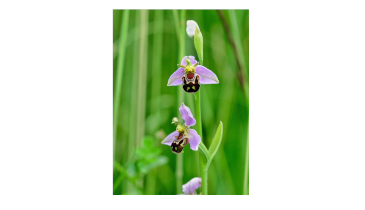The Strange Behavior of Orchids
Romans 1:20
“ For the invisible things of him from the creation of the world are clearly seen, being understood by the things that are made, [even] his eternal power and Godhead; so that they are without excuse.”
 There are between 10,000 and 15,000 species of orchids. While you surely are not familiar with all of them, it sounds strange to talk about orchid behavior. This huge variety of orchids offers a multitude of different flower shapes, colors and sizes. Each unique shape, color and size is perfectly suited to the bees, butterflies, bats, moths, flies and birds that are involved in that orchid’s pollination.
There are between 10,000 and 15,000 species of orchids. While you surely are not familiar with all of them, it sounds strange to talk about orchid behavior. This huge variety of orchids offers a multitude of different flower shapes, colors and sizes. Each unique shape, color and size is perfectly suited to the bees, butterflies, bats, moths, flies and birds that are involved in that orchid’s pollination.
Those orchids that use birds as pollinators have no scent. Instead, they offer the brightest of colors, appealing to the birds’ strongest sense. Evolutionists call this “co-evolution.” However, giving it a name doesn’t explain it. How did these orchids know that the bird’s strongest sense is sight? And how were these orchids able to perform genetic recombination on themselves so that they could develop their bright colors? No, giving something a scientific-sounding name doesn’t make naturalistic claims any more scientific.
Or consider the bee orchid. It offers a flower that looks like a female bee. The purpose here is to attract male bees to a position that will load them with pollen. How can it be scientific to suggest that a plant purposely restructured itself to fool bees into pollinating it?
God has purposely made it impossible to explain the creation without Him. He did this not simply so that we would see that He is real. His purpose is much greater. God seeks a personal relationship with you and has made that possible through the saving work of His Son, Jesus Christ, for us. It is to Christ that He would ultimately draw our attention.
Prayer: Dear heavenly Father, help us to more clearly see Your power and Godhead in the creation so that we may point it out to others. Use us to bring the witness of Christ to them. In Jesus’ Name. Amen.
Author: Paul A. Bartz
Ref: Batten, Mary. 1983. “Sex & plants.” Science Digest, Oct. p. 59. Photo: Bee Orchid by Ian Lindsay – Pixabay.com
© 2021 Creation Moments. All rights reserved.